Ah, the beautiful island of Barbados! With its stunning beaches, vibrant culture, and friendly locals, it’s no surprise that thousands of people flock to its shores every year. But like any other place in the world…
Barbados isn’t immune to the forces of nature. Natural disasters do occur, and when they do, the island’s preparedness and response are of utmost importance.
This blog post aims to enlighten both tourists and residents on natural disasters in Barbados: what they are, how the island prepares for them, and how it responds.
Understanding Natural Disasters in Barbados
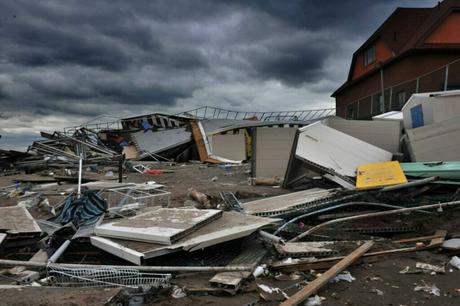
Hurricanes
Barbados is situated in the Atlantic hurricane belt, making hurricanes the most significant natural disaster threat. The hurricane season runs from June to November, with the peak period usually around September. Historically, hurricanes have caused widespread damage in Barbados, like Hurricane Janet in 1955, which unfortunately resulted in several fatalities and substantial destruction.
Earthquakes
Though less frequent than hurricanes, Barbados also experiences seismic activities due to its location near the boundary of the Caribbean and South American tectonic plates. The majority of these earthquakes are small, but a few stand out, like the 7.4 magnitude quake in 2007 that was felt all over the island but only slightly damaged property.
Tsunamis
Tsunamis, which are often triggered by undersea earthquakes, are another potential hazard. While rare, the risk is still there, as evidenced by the Tsunami and Earthquake Smart Month educational campaign conducted annually by the island’s Department of Emergency Management (DEM).
Preparation: Staying One Step Ahead
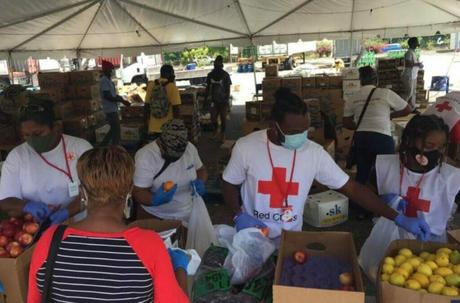
Being prepared for natural disasters is a collective effort involving the government, local organizations, and individuals. Let’s explore how Barbados prepares for these events:
Government and Local Organizations
- The DEM plays a pivotal role in disaster preparedness. They coordinate emergency management activities, including hazard analysis, risk reduction, and response planning.
- The Barbados Meteorological Services provides accurate and timely weather forecasts, including hurricane and earthquake warnings, which are critical for early preparation.
- Community-based organizations, such as the Barbados Red Cross, participate in community disaster preparedness programs, providing training and resources at the local level.
Individual Preparedness
Individual preparedness is just as crucial. If you’re a resident or a tourist, consider the following:
- Always pay attention to weather forecasts and heed any warnings or advisories.
- Familiarize yourself with the local emergency plan and know the nearest evacuation route and shelter.
- Prepare a disaster supply kit, including food, water, medication, and essential documents.
Response: Navigating the Aftermath
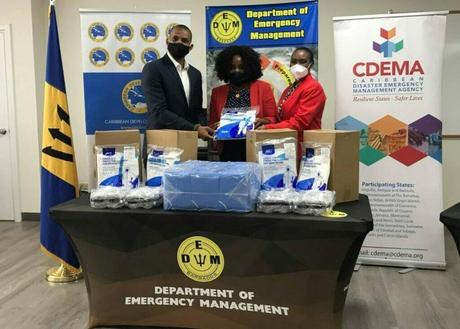
When a natural disaster strikes, the response is just as important as the preparation. Here’s how Barbados typically responds:
Government Response
The government, led by the DEM, coordinates the island’s response efforts. This includes rescue operations, damage assessments, and the provision of emergency relief. The Barbados Defense Force also plays a crucial role, providing manpower and logistical support during these times.
International Aid
In severe cases, international aid is often sought. For instance, after Hurricane Janet, countries like the United States and the United Kingdom provided financial aid, relief supplies, and technical assistance for recovery and rebuilding efforts.
Community Response
The strength of Barbadian communities (or “Bajan” communities, as locals fondly call themselves) is truly tested in these times. Neighbors help each other with cleanup and rebuilding efforts, and local businesses often provide food and supplies to those in need.
Case Study: Hurricane Ivan 2004

Let’s look at a more recent event, Hurricane Ivan in 2004, for a detailed example of Barbados’ disaster response mechanisms in action.
As Ivan approached, the Barbados Meteorological Services issued regular updates, allowing residents and tourists ample time to prepare. Emergency shelters were opened, and the public was advised to secure their homes and stock up on necessary supplies.
When Ivan hit, it caused significant damage, but thanks to the preparations, there were no fatalities. Post-Ivan, the DEM led the recovery efforts, coordinating clean-up operations, damage assessments, and distribution of relief supplies. The Barbados Defense Force supported these efforts, providing manpower and logistical aid.
The community response was overwhelming. Bajans rallied together, assisting in clean-up efforts, and providing support to those most affected. This collective resilience and community spirit are key components of the island’s disaster response strategy.
Historical Context: Learning from the Past

Understanding Barbados’ natural disaster history can help you better understand how these occurrences have influenced the island’s current approach to disaster preparedness and response. For instance, the devastating Hurricane Janet in 1955 led to a significant shift in the government’s disaster management approach. The widespread destruction highlighted the need for a more organized and robust system, ultimately leading to the establishment of the Department of Emergency Management.
Climate Change and Its Impact on Natural Disasters in Barbados
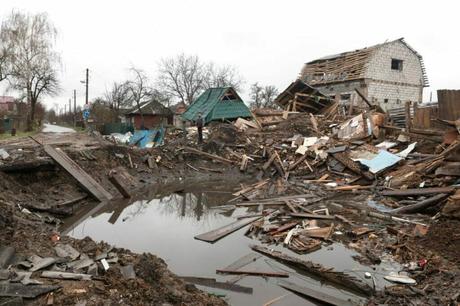
The frequency and severity of natural disasters in Barbados could be significantly impacted by climate change.
Coastal flooding is more likely due to rising sea levels brought on by global warming, especially during storms. Additionally, the island could be more at risk from hurricane seasons that are more intense due to changing weather patterns. For instance, warmer ocean temperatures can fuel more powerful storms, turning what might have been a typical hurricane into a major one.
To mitigate these effects, Barbados has been actively involved in global climate change initiatives and has implemented local measures such as beach replenishment projects and the development of a coastal infrastructure plan to increase resilience against rising sea levels.
Technological Advancements and Innovative Strategies in Disaster Management
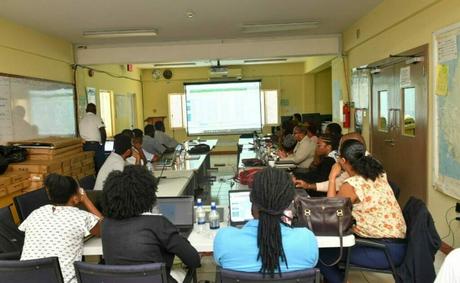
In addition to traditional methods of disaster management, Barbados is also utilizing technology and innovative strategies to enhance its preparedness and response.
For instance, the use of Geographic Information Systems (GIS) has been instrumental in disaster risk reduction. GIS allows for real-time tracking of weather patterns and can model potential disaster scenarios, enabling more efficient evacuation and response plans.
Innovative strategies are also being explored in community-level disaster management. The island has been promoting Community-Based Disaster Management (CBDM), which emphasizes local knowledge and involvement in disaster preparedness and response activities. This approach fosters resilience and self-sufficiency within communities, ensuring that they are not solely reliant on national mechanisms.
These examples demonstrate Barbados’ commitment to staying at the forefront of disaster management, continuously adapting, and innovating to ensure the safety and resilience of its residents and visitors alike.
A Tourist’s Guide to Navigating Natural Disasters
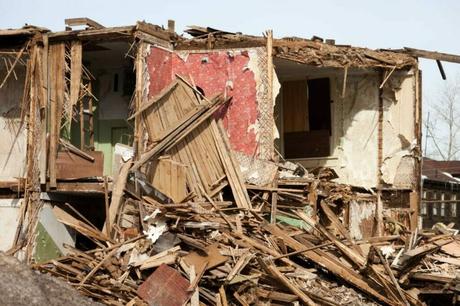
In case you find yourself in Barbados during a natural disaster, here are some tips to keep you safe:
- Stay Informed: Keep a close eye on local news and weather updates. The Barbados Meteorological Services and the U.S. Embassy provide regular updates in English.
- Know Your Location: Familiarize yourself with your surroundings. Know the quickest route to high ground and the nearest disaster shelter.
- Follow Local Guidelines: Heed all warnings and instructions from local authorities. If an evacuation is ordered, don’t delay.
- Stay Connected: Keep your emergency contacts list updated and make sure your loved ones know your whereabouts.
- Seek Assistance: If you require assistance, get in touch with the embassy or consulate of your nation; they can offer support and information.
Remember, your safety is paramount. Being informed and prepared can make all the difference when navigating a natural disaster.
FAQ
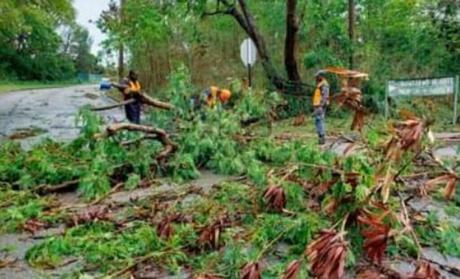
Are Natural Disasters Common In Barbados?
Natural disasters, particularly hurricanes, occur periodically in Barbados due to its geographical location within the Atlantic hurricane belt. However, rigorous preparedness and response measures have been put in place to manage these events effectively.
Is Barbados Prone To Earthquakes?
Barbados experiences seismic activities due to its proximity to the boundary of the Caribbean and South American tectonic plates. While most of these earthquakes are minor, occasional significant tremors do occur.
What Was Barbados’ Worst Hurricane?
Historically, Hurricane Janet in 1955 was the most devastating for Barbados, causing widespread damage and numerous fatalities. It marked a significant turning point in the country’s approach to disaster preparedness and management.
Is Barbados At Risk Of Flooding?
Barbados can experience flooding during periods of heavy rainfall, especially during the hurricane season. Urban areas and coastal zones are particularly susceptible due to their lower elevations and high population density.
When Was The Last Hurricane In Barbados?
As of my knowledge cutoff in September 2021, the last significant hurricane that impacted Barbados was Hurricane Elsa in July 2021. However, for the most recent data, please refer to the Barbados Meteorological Services or other reliable sources.
What Are The Threats To Barbados?
The primary natural threats to Barbados include hurricanes, earthquakes, and tsunamis. The island also experiences environmental problems like coral reef degradation and coastal erosion, which can worsen the effects of these natural disasters.
Conclusion
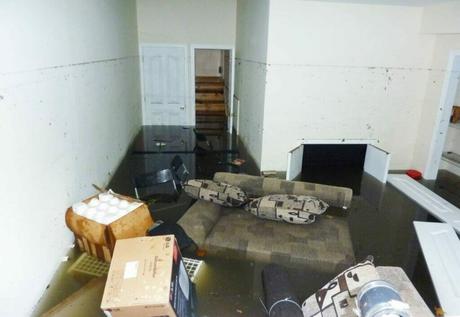
Natural disasters can be a daunting reality in any part of the world, and Barbados is no exception. However, the island’s preparedness and response mechanisms are robust and continue to evolve, ensuring that both residents and visitors are safeguarded.
Mother Nature is beyond our control, but we do have some control over how we prepare for and react to her occasionally erratic moods. The knowledge of potential natural disasters, how to prepare for them, and how the island responds can therefore go a long way in ensuring your safety and peace of mind, whether you’re a tourist planning your next sun-drenched vacation or a local enjoying the island’s beauty on a daily basis.
The beauty of Barbados extends beyond its white sandy beaches and azure waters; it’s also in the resilience of its people. From government officials to local communities, everyone plays a part in ensuring that the island remains a safe, welcoming haven no matter what nature has in store.
Remember, knowledge is power. And with this newfound understanding of natural disasters in Barbados, you’re not just more prepared; you’re also contributing to the collective resilience that makes this island truly special. So, keep enjoying the sunshine, the culture, and the warm Bajan hospitality, knowing that even in the face of natural disasters, Barbados stands ready and resilient.

